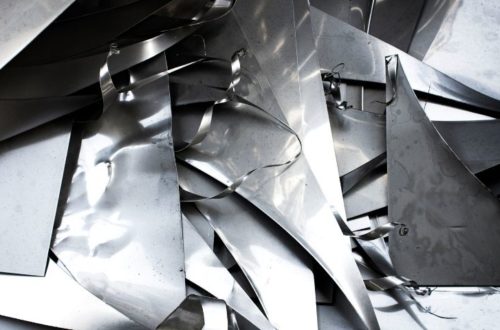How Does Scrap Metal Recycling Work?

Metals are recycled repeatedly without the risk of altering their properties. Steel is a commonly recycled material around the world. Other metals that are highly recycled include gold, brass, silver, copper and aluminum.
But how does scrap metal recycling work? That’s what we’ll explore in this article!
Reasons for Recycling Metals
Metals are highly valuable materials that have the ability to be recycled over and over again without their properties being degraded.
- The value of scrap metal motivates individuals to collect it and sell it to recyclers.
- Along with the financial incentives, an environmental need also exists. Recycling metals makes it possible to preserve natural resources and requires less energy for processing than manufacturing new products by using raw virgin materials.
- Recycling releases less harmful gases, including carbon dioxide. It saves money and enables manufacturers and businesses to lower their production costs.
- The industry creates jobs.
Types of Metals
Metals are generally classified as non-ferrous or ferrous. Ferrous metals contain combination of iron and carbon. Cast iron, wrought iron, alloy steel and carbon steel are examples of common ferrous metals. Non-ferrous metals consist of tin, zinc, lead, copper and aluminum. Precious metals such as palladium, iridium, silver, platinum and gold are non-ferrous.
Collection
The collection process is different from other materials due to the higher value of scrap metal. Subsequently, it is more likely for the metals to be sold to scrap yards rather than sending them to landfills. Scrap vehicles are among the largest sources of ferrous metals.
Other sources include consumer scrap, farm equipment, ships, railroad tracks and steel structures. Prompt scrap is created while manufacturing new products and accounts for a substantial percentage of the supply of ferrous scrap.
Sorting
Sorting consists of separating metals from the stream of mixed scrap metal or stream of mixed material waste. Sensors and magnets are used in automatic recycling operations to aid the separation of materials.
Scrappers at the entrepreneurial level may also use a magnet to observe the weight or color of the material to determine the type of metal. Scrappers can enhance the value of materials by separating clean metal from dirty metal.
Processing
Metals are shredded to enable further processing. Shredding is performed to promote the process of melting since small shredded metal can be melted with relatively less energy due to the large surface to volume ratio. Aluminum is usually transformed into small sheets while steel is converted into steel blocks.
Melting
A large furnace is used for the purpose of melting scrap metal. Specific furnaces are used for each metal as furnaces are designed to melt certain metals. This step requires a considerable amount of energy. However, the energy that is required to recycle and melt metals is much less than what is needed or producing metals from virgin raw materials. Melting can last for varying periods of time depending on the volume of the metal, level of heat of the furnace and the size of the furnace.
Purifying
Purification ensures that the final product is free of contaminants and high quality.
Solidifying
Melted metals are transported by the conveyor belt after purification for the purpose of cooling and solidifying the metals.
Conclusion
Scrap metal recycling plays a crucial role in sustaining both industry and the environment by maintaining metal properties throughout its cycle, from collection to solidification. The meticulous steps involved not only uphold the integrity of metals but also reduce energy consumption, emissions, and resource strain.
Understanding how scrap metal recycling works reveals a system that harmonizes industry, innovation, and ecological responsibility, steering us toward a greener and more sustainable future.
Would you like to receive similar articles by email?





